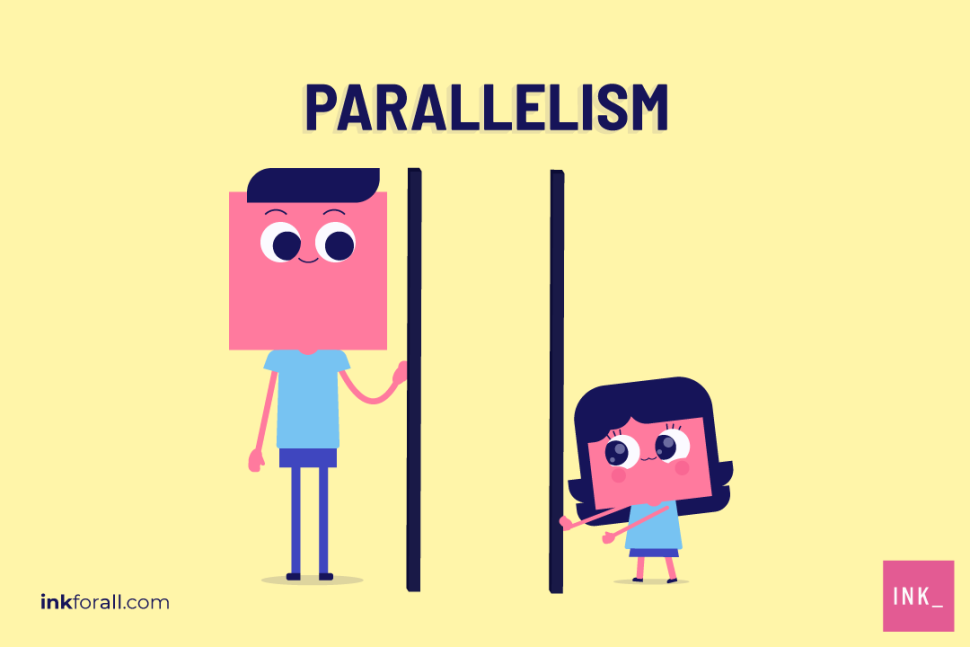Chapter 12-Parallelism
Parallelism, oftentimes called parallel structure, refers to writing in a way that is balanced and fluid. Parallel writing is clear and “sounds right” when read aloud. It includes using the same pattern of words and word forms throughout your sentence.

When writing parallel structures, generally, nouns should be placed with other nouns, verbs with other verbs, and so forth.
For example, if you have two verbs in your sentence that end in -ing, and you add a third verb, your additional verb should also end in -ing. This creates parallel structure and just sounds balanced and fluent.
The boys enjoyed reading books, hunting for blackberries, and riding bikes during the summertime.
**The above sentence is parallel because the verbs all “match” since they end in -ing.
Parallelism also includes
- Infinitives
- Not Parallel: She loves to read books, to write stories, and painting pictures.
- Parallel: She loves to read books, to write stories, and to paint pictures.
- Descriptors (adjectives/adverbs)
- Not Parallel: We were instructed to enter the exam room swiftly, quietly, and in a careful manner.
- Parallel: We were instructed to enter the room swiftly, quietly, and carefully.
- Not Parallel: We saw a beautiful sunset, a gorgeous canyon, and flowers.
- Parallel: We saw a beautiful sunset, a gorgeous canyon, and pretty flowers.
- Clauses
- Not Parallel: My guidance counselor suggested that I should get some rest, that I should eat well, and to do some breathing exercises before the exam.
- My guidance counselor suggested that I should get some rest, that I should eat well, and that I should do some breathing exercises before the exam.
The most common area of struggle with parallelism is in the thesis statement. Since this sets the tone for the rest of your essay, it is important to make sure this sentence is clear, concise, and balanced.
Student Activity 1: Below are some thesis statements. Underline the balanced elements within the statements.
The globalization of the economy has led to both positive and negative consequences for developing countries, affecting their economic growth, cultural identity, and social dynamics.
Education is the key to individual empowerment, societal progress, and economic prosperity, making it crucial to ensure equal access and quality education for all.
The legalization of marijuana for medicinal and recreational purposes has sparked a debate regarding its benefits, risks, and potential impact on society.
Chapter Practice
Correct the following sentences in order to make them parallel.
